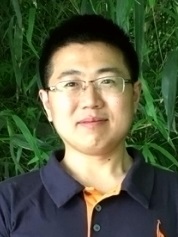
Associate Professor
Email: ruiliangbai@zju.edu.cn
Dr. Bai received his Ph.D. degree from the Biophysics program at University of Maryland (UMD) and the Graduation Participation Program at National Institutes of Health (NIH) in 2015, under the mentorship of Prof. Robert Briber (UMD) and Dr. Peter Basser (NIH). After graduation, he further took a Postdoctoral Visiting Fellow position at NIH with Dr. Peter Basser. In Oct. 2017, Dr. Bai will join Interdisciplinary Institute of Neuroscience and Technology at Zhejiang University (ZIINT) as an Associate Professor. In his Ph.D. thesis and postdoc work, Dr. Bai focused on (1) inventing “bloodless” functional MRI contrast mechnisms to detect neuronal activity direct, fast, and accurate enough for whole brain functional mapping; (2) developing fast multidimensional MRI relaxation/diffusion spectroscopy for tissue microstructure characterization; and (3) studying water (and ions) dynamics in healthy and pathological cells and tissue and its detection with MRI. In recognition of him as a young researcher of outstanding quality and promise, with a siginificant potential for leading the scientific field, Dr. Bai was elected as the International Society for Magnetic Resonance in Medicine (ISMRM) Junior Fellow in 2017.
Research Interests:
With nearly 100 billion neurons, ten-fold more glial cells, and an estimated 100 trillion connections, human brain remains one of the greatest challenges in science and medicine. Brain disorders, including Alzheimer’s disease, Parkinson’s disease, stroke, autism, etc., are major causes of death and disability worldwide, placing a tremendous load on those suffering from these diseases and their families. However, except for the complex nature of brain itself, the limited imaging tool currently available to study the brain accurately and noninvasively is one of the major obstacles in the fundamental and clinical study of human brain. Thus, developing novel and efficient brain imaging techniques and tools is extremely essential.
I strive to probe and understand the fine structure, organization, and major functions of brain via inventing and applying novel magnetic resonance imaging (MRI) methods and other quantitative imaging methods. Specifically, I’m interested in non-invasively detecting brain tissue microstructure, e.g., cell types, shapes, sizes, densities, axon diameters and connections, etc., and the essential physiological processes, e.g., neuronal activity, vascular transport, cell membrane transport, metabolic activity, etc., at normal and pathological states. Another aim of my research is to translate these bench-based novel quantitative methodologies, and the understanding we glean from them, to the bedside.
< Back

